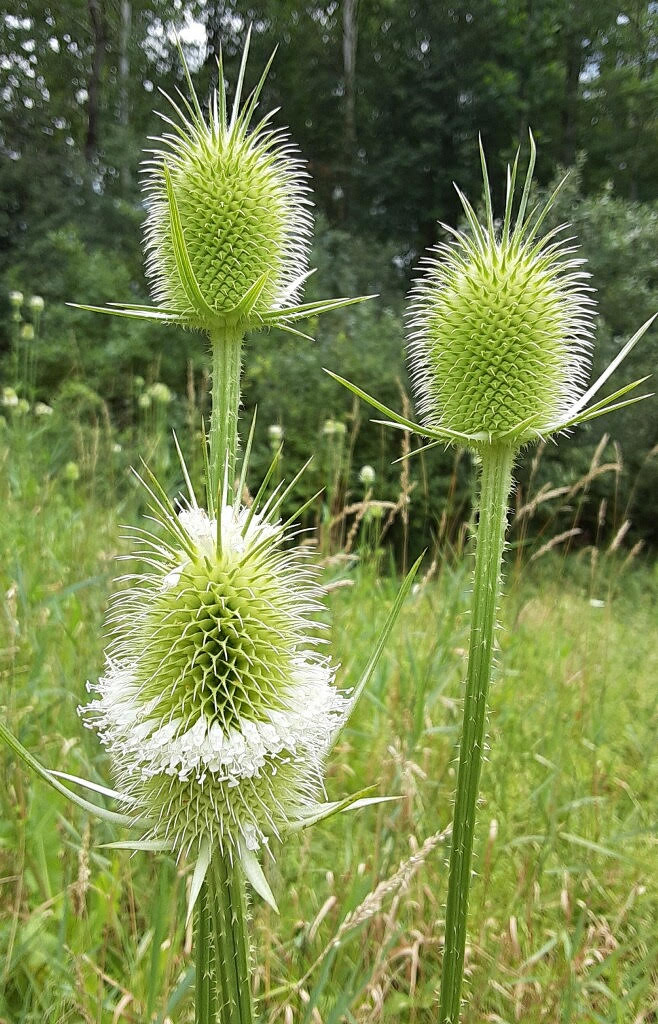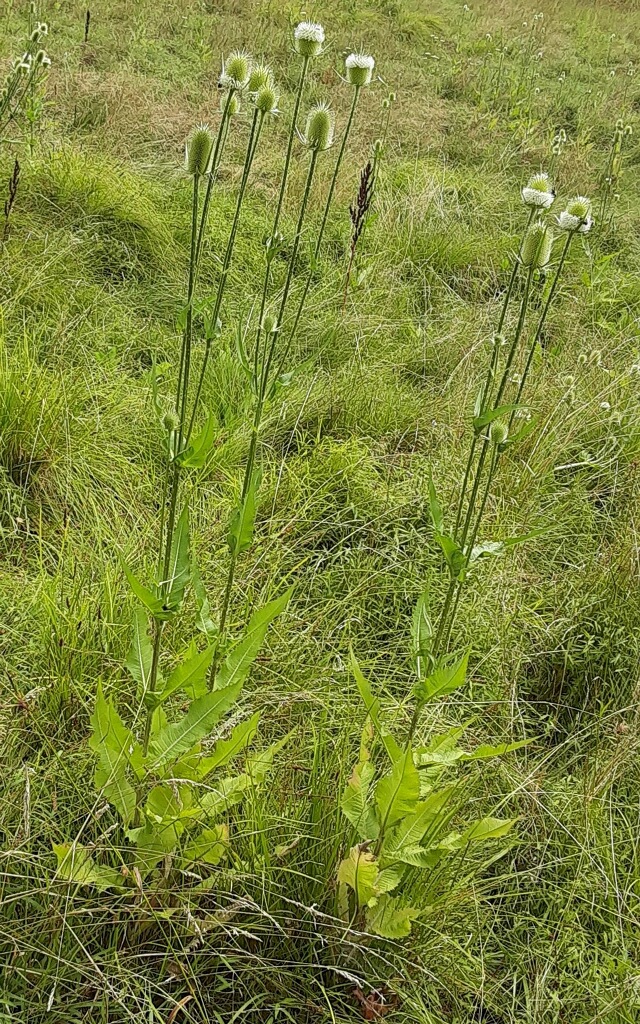By Susan Sprout
During the Colonial Era, many people brought with them the plants and animals they needed to be successful when beginning a new life in a foreign land. Teasel is one such immigrant whose presence, although required for producing cloth at that time, is not required now, thanks to technological advances made in the wool manufacturing factories since then.

Teasels are well-armed plants with bristles and spines on leaves, stems, and flower heads, even on the long pointed bracts that surround them. Their prickliness is what made them so valuable in the production of wool cloth. The flower heads were carefully cut and put into frames that allowed the cloth makers to hold onto them and scratch the flat surface of newly-woven cloth, raising the nap to make it softer and furrier. The raised nap was then closely trimmed for an even texture before the cloth was dyed and tented, or placed on tenterhooks, to shrink and dry.
You have probably seen a lot of teasel this year, growing along roads and in unused fields. This plant is a monocarpic perennial, meaning it needs to keep growing until it accumulates enough stored energy to bloom and set seed; then, it dies. So, younger teasel plants may have growing in those fields for two or more years before becoming unbelievably obvious – at up to eight feet in height! Their oval-shaped flower heads are unusual, as well, with flowers opening first in a belly band around the middle, and then moving up and down, forming two strips of flowers, top and bottom. Several species grow in PA – purple or white flowered, some with toothed leaves and others smooth-edged, except for the prickles!
Teasel is listed by the National Invasive Species Information Center. Once established, it is difficult to eradicate. A single plant can produce two thousand seeds. These plants create a mono-culture that crowds out native plant species.


